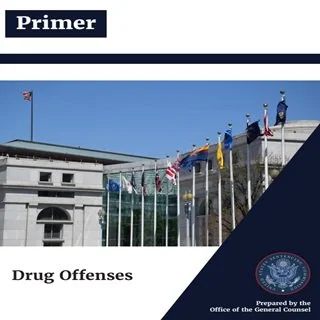By The Council on Criminal Justice
As cities across the nation grapple with effective responses to increases in violent crime, a task force co-chaired by former U.S. Deputy Attorney General Sally Yates and former U.S. Rep. Trey Gowdy today released a report outlining a comprehensive approach for the use of lengthy prison sentences in the United States.
The report, How Long is Long Enough?, presents 14 recommendations to enhance judicial discretion in sentencing, promote individual and system accountability, reduce racial and ethnic disparities, better serve victims of crime, and increase public safety. Defining long sentences as prison terms of 10 years or longer, the panel’s proposals include:
Shifting savings from reductions in the use of long prison sentences to programs that prevent violence and address the trauma it causes individuals, families, and communities (Recommendation 1).
Allowing judges to consider all relevant facts and circumstances when imposing a long sentence, and requiring that sentencing enhancements based on criminal history are driven by individualized assessments of risk and other factors (Recommendations 6 and 8)
Providing selective “second look” sentence review opportunities and expanding access to sentence-reduction credits (Recommendations 11 and 12)
Focusing penalties in drug cases on a person’s role in a trafficking organization, rather than the amount of drug involved, (Recommendation 7)
Reducing recidivism by providing behavioral health services and other rehabilitative living conditions and opportunities in prison (Recommendations 3 and 13)
Strengthening services for all crime victims and survivors by enforcing victims’ rights, removing barriers to services, and creating restorative justice opportunities (Recommendations 2, 4, and 9)
“Some may wonder, why would we even discuss the nation’s use of long prison sentences now, amid a rise in homicide rates and legitimate public concern about public safety? Because this is exactly the time to examine what will actually make our communities safer and our system more just,” Yates and Gowdy said in a joint statement accompanying the report. “When crime rates increase, so do calls for stiffer sentencing, often without regard to the effectiveness or fairness of those sentences. Criminal justice policy should be based on facts and evidence, not rhetoric and emotion, and we should be laser-focused on strategies that make the most effective use of our limited resources.”
The report is the product of a year-long analysis by the nonpartisan Council on Criminal Justice (CCJ) Task Force on Long Sentences, which includes 16 members representing a broad range of experience and perspectives, from crime victims and survivors to formerly incarcerated people, prosecutors, defense attorneys, law enforcement, courts, and corrections. The panel examined the effects of long sentences on the criminal justice system and the populations it serves, including victims as well as people in prison, their families, and correctional staff.
Drawing on sentencing data and research, including a series of reports prepared for the Task Force, the sweeping recommendations offer a comprehensive blueprint for action on a complex and polarizing topic. According to an updated analysis by CCJ, 63% of people in state prison in 2020 were serving a sentence of 10 or more years, up from 46% in 2005, a shift due largely to a decline in people serving shorter terms. During the same period, the gap between Black and White people receiving long terms widened, from half a percentage point to 4 percentage points. Though murder defendants were the most likely to receive a long sentence, drug offenses accounted for the largest share (20%) of those admitted to prison to serve 10 or more years.
“Our nation’s reliance on long sentences as a response to violence requires us to wrestle with highly challenging questions about the relationship between crime, punishment, and public safety,” Task Force Director John Maki said. “Through their painstaking deliberations, our members rose to the challenge and produced a set of recommendations that recognize our need to advance public safety while respecting the humanity of those most affected by long prison terms.”
Washington DC: Council on Criminal Justice, 2023. 39p.
















